Unearthing the Colorful and Bizarre Pouch Fungi of New Zealand
Captivating colors, shapes, and ingenious spore dispersal methods of false truffles.
Picture a mushroom, and you'll likely imagine the classic umbrella-shaped cap. However, the fungal kingdom is teeming with countless species that defy this image, relying on alternative methods to spread their spores.
Enter the peculiar world of secotioid or "stomach" pouch fungi. These funky in-betweeners are caught mid-evolution, straddling the line between typical mushrooms and pouch-shaped fungi.
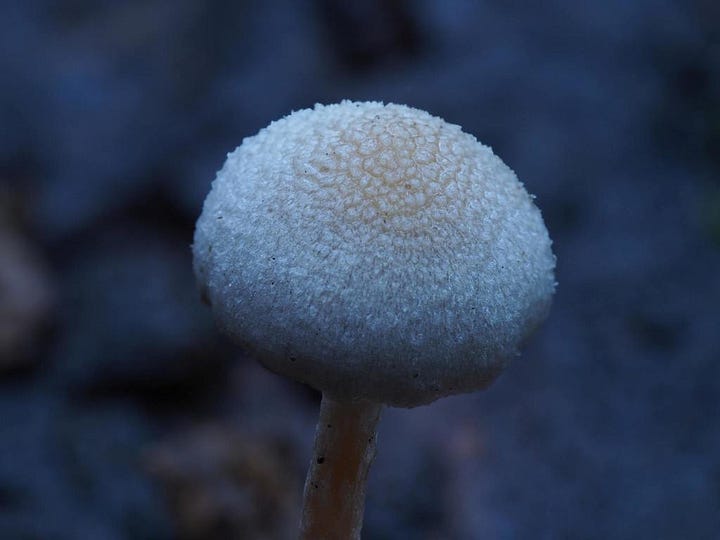
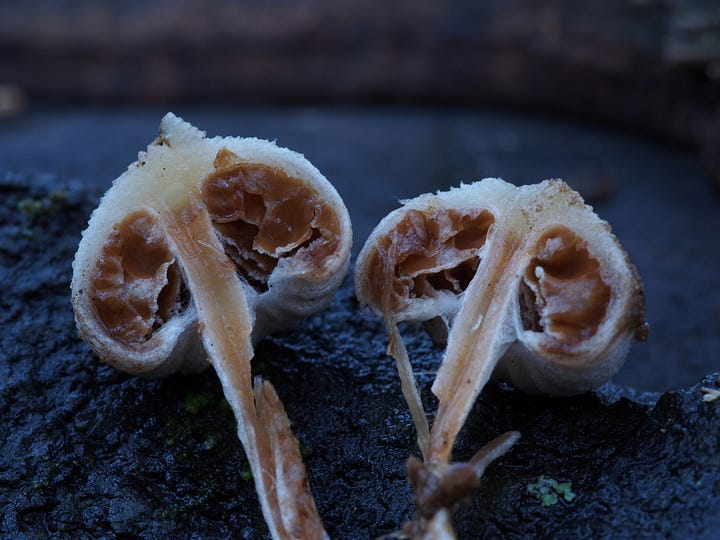
Instead of releasing spores into the wind, they hitch rides on insects or rodents. Scientists have discovered that these oddballs are more closely related to some open mushrooms than previously thought, adding intrigue to the already complex fungus family tree.
Among this fascinating group are the gasteroid fungi, which include puffballs, earthstars, stinkhorns, and false truffles. These organisms produce their spores internally rather than on exposed surfaces.
As I wander through New Zealand's forests, I'm captivated by these fungi, their vibrant colors and distinct odors beckoning insects, birds, and curious humans alike to aid spore dispersal.
Gasteroid fungi have a long history, dating back to their initial description in Carl Linnaeus's Species Plantarum in 1753.
As a group, gasteroid fungi make up around 8.4% of the known Agaricomycetes, encompassing 17 orders, 100 families, 1,147 genera, and about 21,000 species.
Further classifications emerged in 1801 through the work of Christiaan Hendrik Persoon, and it was not until 1981 that these classifications would be based on naming Gasteromycetes for algae, fungi, and plants.
Leccinum pachyderme / Potato Fungus
For instance, the Leccinum pachyderme (formerly Rossbeevera pachydermis), or Potato Fungus, begins as a bulbous white growth nestled within moss or soil and only grows in beech forests.
As it ages, the mushroom darkens and takes on a bluish-green hue, its interior turning a pungent brown.
Scarlet Pouch Fungus
There is mimicry in Leratiomyces erythrocephalus, as well as other pouch fungi. Instead of utilizing wind to carry spores, various truffle-like fungi use smell to attract ground-dwelling mammals that eat and then poop to spread spores throughout the forest floors.
Instead of using pungent smells to attract them, they display vivid red. While mammals typically have exceptional noses, their eyesight is poorer than birds, who have some of the largest and best eyesight in the animal kingdom.
The number of photoreceptors in a bird's eye can be in the millions per mm2 versus us humans at 200K photoreceptors. 90% of these receptors seek out color, and birds can naturally detect the color red. We see this co-evolution in plants where plants have adapted to grow colorful flowers that encourage bird dispersal for millions of years.
The L. erythrocephalus resembles small red berries and thrives in otherwise rare nitrogenous bird poop. Given that New Zealand has no endemic land-based predators and is bird country, it's fitting that the Scarlet Pouch fungus would be found here.
Velvet Potato Fungus
In the world of false truffles, Gallacea scleroderma stands out, its striking purple color impossible to miss.
One cannot help but ponder the interaction between this fungus and the massive Moa, a bird once native to New Zealand.
Purple Pouch Fungus
The purple pouch fungus, Cortinarius porphyroideus, is a unique fungus found only in New Zealand.
The purple pouch fungus was first discovered in 1924 in Wellington and has undergone a few name changes due to scientific research. Most recently, in 2020, it was found to be part of a group of six distinct species.
One suggested common name for it is "King's Pouch."
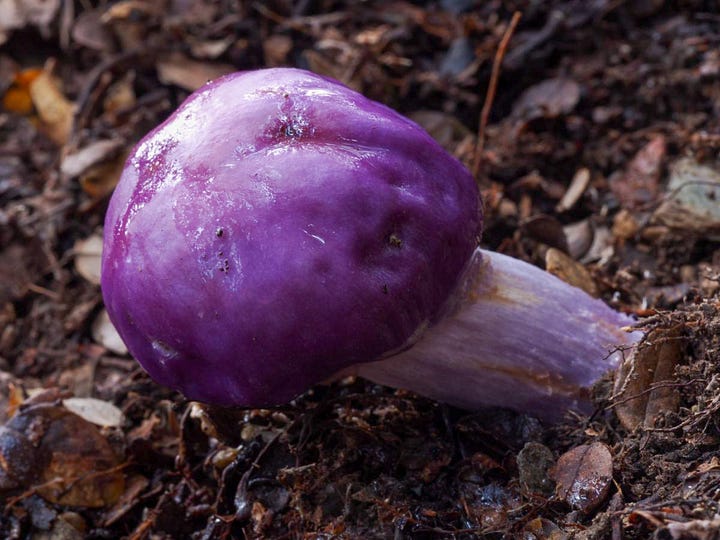

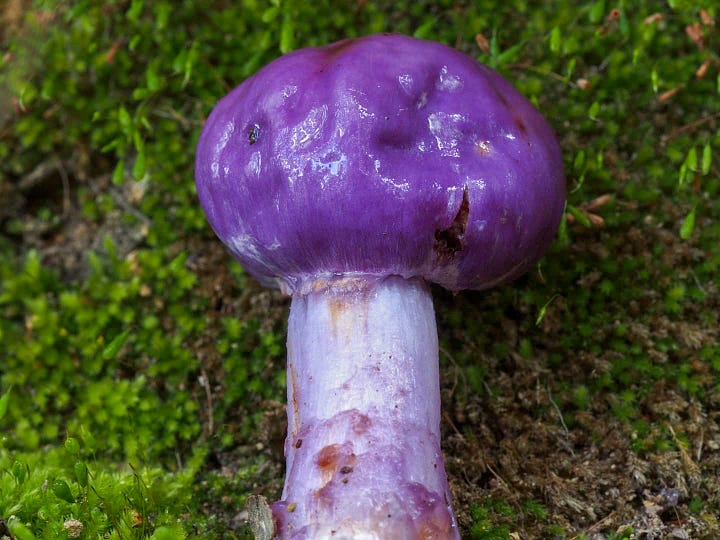
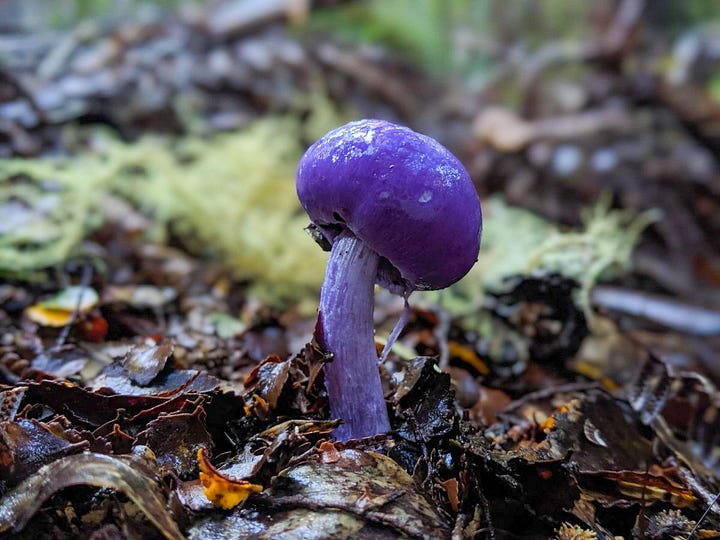
It has a pale purple stalk with yellow shades at the base, and the inside of the fungus has a reddish-brown maze-like structure.
When it's young and still underground, the fungus is white but turns purple when it comes out and gets exposed to light. C. porphyroideus has only been found near Wellington, though. Some species look similar but aren't closely related phylogenetically. There are four new species of Cortinarius with strong morphological similarities to C. porphyroideus: Cortinarius diaphorus, C. minorisporus, C. purpureocapitatus, and C. violaceocystidiatus.
Cortinarius cartilagineus
In appearance and to the touch, the peridium resembles chamois leather and a color of ochraceous to deep apricot yellow.

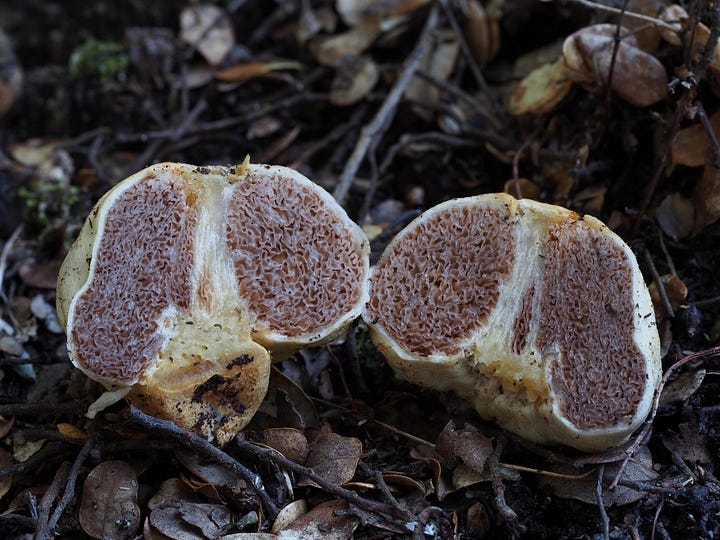
Tossing these growths up, I feel the weight in my hand as if they’re stones.
Octaviania tasmanica
A fitting name as it reminds me of something otherworldly and borne from the imagination of sci-fi author Octavia Butler. This alien potato has skin that bruises red. Something completely new to me as I get ever-fascinated cleaning up and removing mud from this hefty egg to photograph.
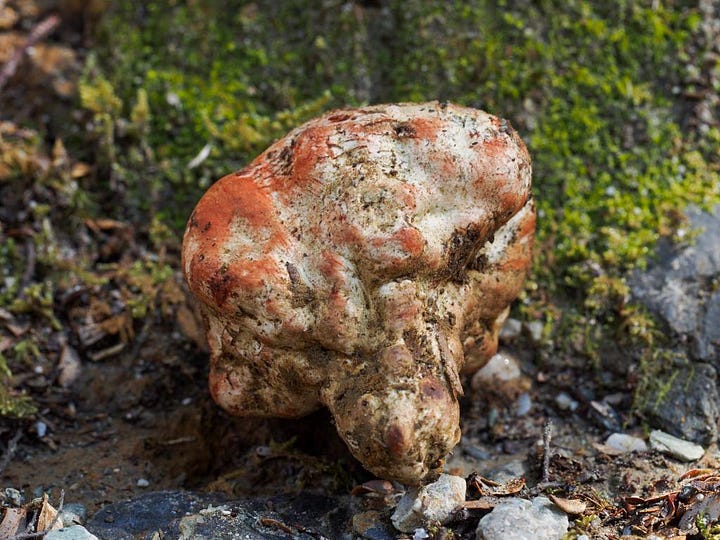

I pull out my knife to slice it in half. I cut through the tough skin, a weird yet overwhelmingly curious mixed feeling to find out what's inside, like a Kinder egg. A clear liquid (water?) immediately gushes out from a crevice, covering a meaty, steak-like brown interior.
Blue Pouch Fungus / Clavogaster virescens
Clavogaster virescens features a stout yellowish stem and a cap that forms a blue-green pouch, or peridium. The "virescens" epithet refers to the pouch's verdant, copper-rust-like green color.
Initially named Secotium virescens upon discovery in 1890, the species was later moved to the genus Weraroa, which was eventually debunked by advancements in phylogenetics and DNA barcoding. It was then recognized as Clavogaster virescens, the sole described species of the Clavogaster genus.

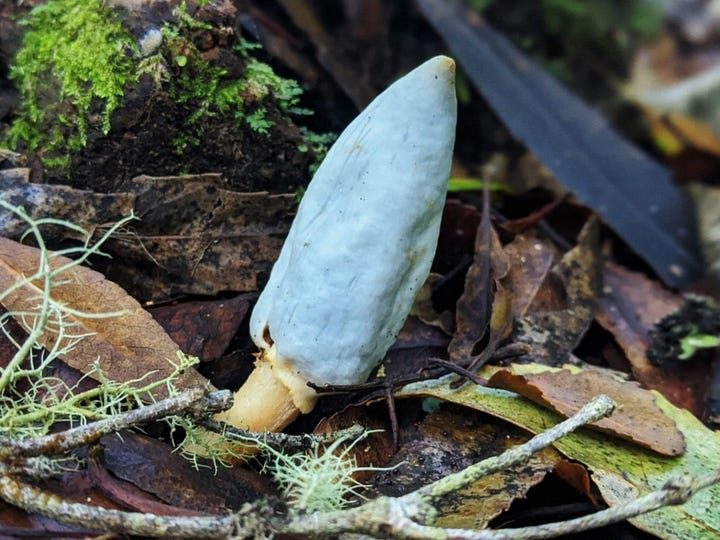


Its verdant-colored pouch houses reddish-brown to orange gleba, forming a distinct characteristic. Its solid yellow stem, non-psychoactive properties, and a gleba housed in a sack-like layer distinguish it. It is most often mistaken for Psilocybe weraroa, which differs in having a white fibrous stem, a blueing reaction, psychoactive properties, and an unenclosed gleba.
Forest Prettymouth / Calostoma rodwayi
Calostoma rodwayi, known as the "Forest Prettymouth," is typically found among litter and bryophytes in Myrtle Beech forests. Only its brown head peeks above the litter, presenting a blistered, pale brown spore sac with a vivid scarlet to orange mouth at the top.
Hidden underneath is a stem composed of interwoven gelatinous threads. Notably, the puffball is hoisted on a thick gelatinous golden-brown stalk, showcasing distinctive orange-red lips which serve as the spore ejection point. The puffball can grow up to 20-25 mm in diameter. Its Greek-derived name, "Calostoma," fittingly translates to "pretty mouth."
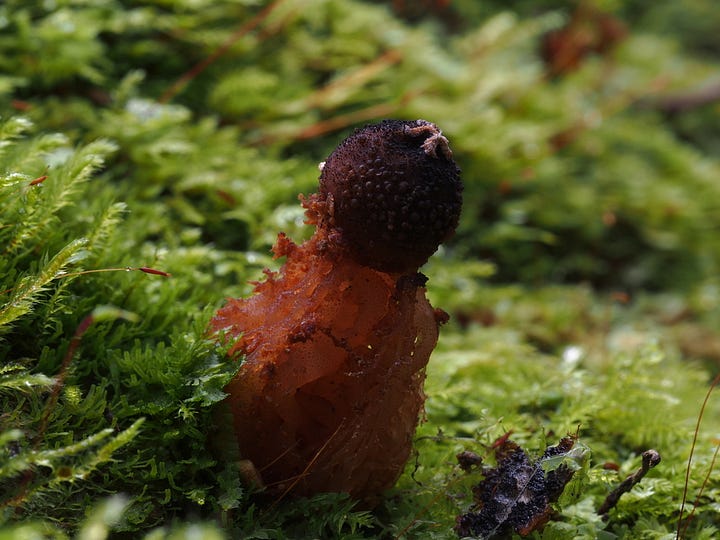

This journey through New Zealand's gasteroid fungi reveals a world of vibrant colors, strange shapes, and ingenious methods of spore dispersal. As we continue to uncover new species, we gain a deeper appreciation for the sheer wonder and diversity of the fungal realm.










My favourites are the purple pouch fungi. I didn’t realise one was unique to Wellington, nice to think we have something special going on here!